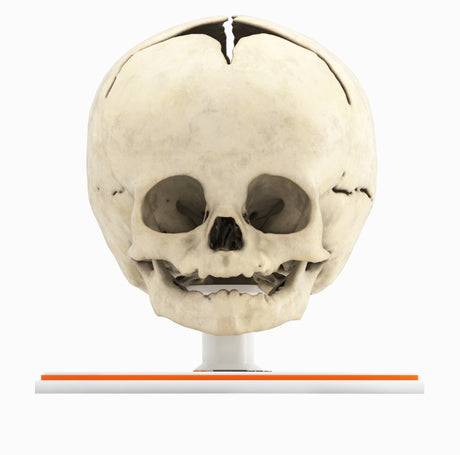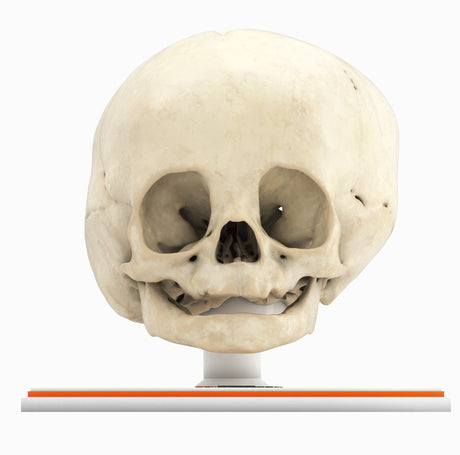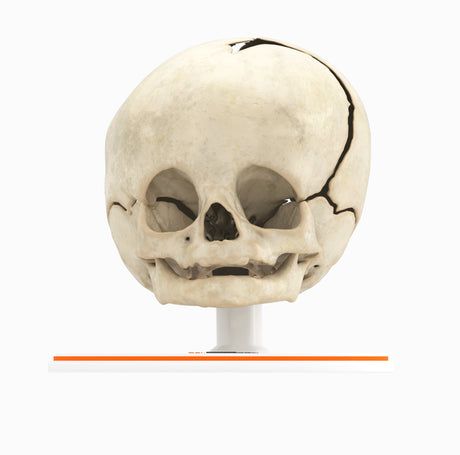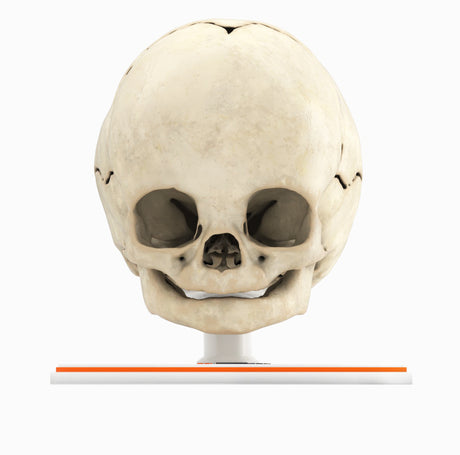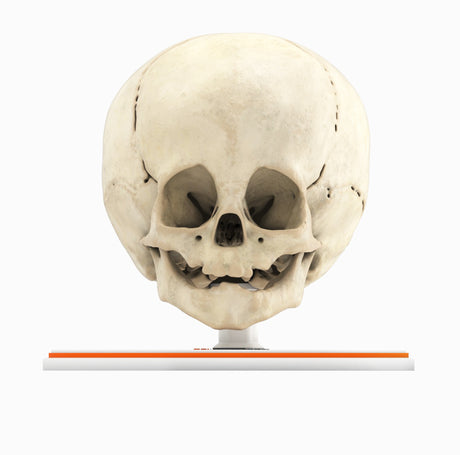What Is Craniosynostosis?
The bones of the skull are connected with fibrous joints called sutures. In between the sutures are membranous gaps called fontanelles, also known as soft spots. Sutures remain open to allow for bone expansion during fetal and childhood development.
Craniosynostosis occurs when one or more of the sutures closes early. Premature fusion of sutures can cause the skull to grow in an unusual shape. Left untreated, craniosynostosis can restrict head and brain growth, and increase intracranial pressure. In addition to an abnormal skull shape, symptoms may include headache, projectile vomiting, fatigue, a bulging soft spot and difficulty looking upward. Left untreated, craniosynostosis can also interfere with psychosocial development and peer relationships later on.
Types of Cranial Sutures
Sutures are found throughout the surface of the skull. Some sutures run along the midline, but most are located on both sides of the skull as a pair.
The sagittal suture runs along the midline of the skull from front to back. Premature fusion causes a long, narrow skull. This is the most common type of synostosis.
The coronal suture runs across the top of the skull from ear to ear. Premature bilateral fusion can cause a short, wide skull. Premature unilateral fusion can flatten the forehead and brow on one side of the face, with a more prominent forehead and brow on the other side.
The metopic suture runs from the top of the skull down the middle of the forehead. Premature fusion gives the forehead a triangular shape and may affect the placement of the eyes. A metopic ridge is typically visible down the center of the forehead.
The lambdoid suture is located at the back of the skull. Premature fusion causes the skull to flatten in the back, pulling the forehead and ear with it, on one or both sides. It is the rarest type of synostosis.
How Common Is Craniosynostosis?
The condition occurs in one out of every 2,000 to 2,500 live births. It is more common in males than females by a ratio of 3:1. The cause of craniosynostosis is often unknown, but it can be related to certain genetic disorders including Apert, Crouzon and Pfeiffer Syndromes.
How Is It Treated?
Craniosynostosis may be treated a variety of traditional or minimally invasive surgical techniques, depending on the child’s age, affected sutures and other factors. Cranial molding helmets may be used alone or in conjunction with surgery. The goal of treatment is to correct the shape of the child’s head and allow for normal brain growth. Treatment is typically most effective as early as possible within the first year of an infant’s life.











